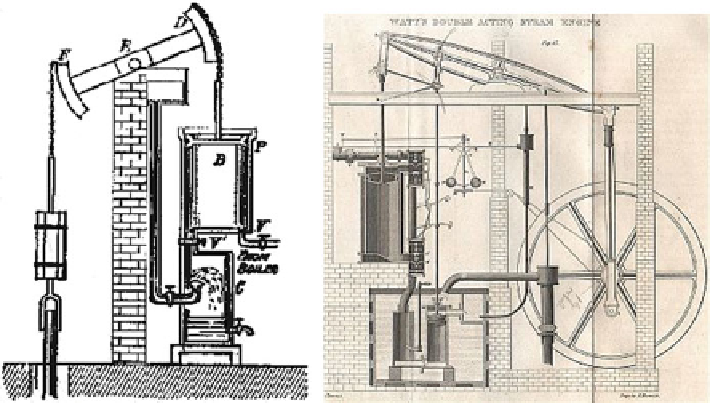Information Technology Reference
In-Depth Information
Fig. 13.3 The design of steam engine as a generic technology, by Watt and Boulton. (a) 1763
Watt steam engine with separate condensation chamber; (b) 1784 Watt & Boulton Double acting
steam engine (parallel motion or so-called “reciprocating steam engine”)
Boulton historically designed steam engine as a generic technology: based on
historical topics, Kokshagina et al. show that there was already steam engines,
and they were adapted to mining, but not to other uses; hence steam engine in the
1970s was not a generic technology (see illustration in Fig.
13.3
). In the 1780s,
Boulton asked Watt to work on a generic concept “a steam engine that is compatible
with multiple machine tools”; and Watt designed a specific “steam-engine technol-
ogy” for this concept. Surprisingly enough, it even appears that the key issue was
very specifically to design a new way to transmit movement from steam engine,
namely a “reciprocating steam engine”. Hence a strange paradox of the design of
generic technology: it seems to be a “complete” original technology (steam engine),
but its design actually focuses on a detail in the complex system (transformation of
the movement of the steam engine rod).
This historical case underlines that the evolutionary model might hide more
intentional and complex processes, and there might be a variety of processes to
design a generic technology.
13.3.2 The Issue: Designing “Whatever Theta”
The issue is to understand the specificities of a design process that designs one
independence between the design space and some invariances. The evolutionary
model deals with it in a sequential process: a technology d
0
is designed for one θ
0
,
and then its utility is tested on each of the other elements θ
ι
of Θ. But suppose that Θ

Search WWH ::

Custom Search